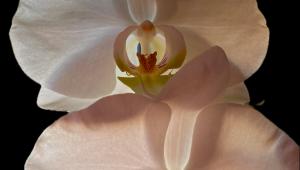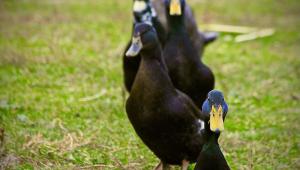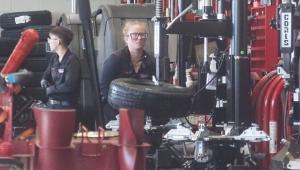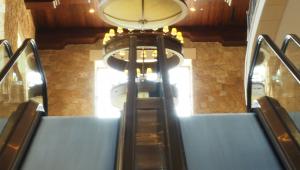The Path Of Ann Johansson; A Life Dedicated To Recording Humanity Page 2
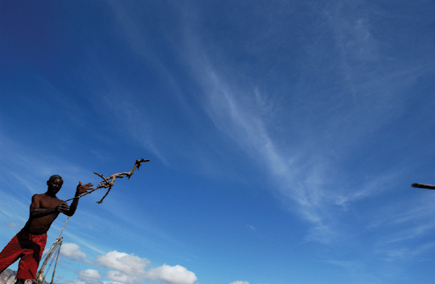 |
|
|
"I learned there in Haiti that becoming a war photographer was actually
doable as a freelancer, though costly," Johansson says. "I would
like to challenge myself to work in that kind of situation again but do not
want to make it my life." The Haiti work can be seen through Corbis.
Though her current chromes are done mostly with a Hasselblad XPan, Johansson
does not consider herself a landscape or panoramic photographer and enjoys using
the XPan for portraits as well. "I'm still learning how to use the
whole frame and fill it with people doing things," she says. "It's
a luxury for me to use this camera since most of my work now has to be digital
and I use the Nikon D1X and D100. I do love the digital, though. I can goof
around and try things and have so much freedom now that I don't have to
worry about film. So much of my work is for newspapers like The New York Times,
Los Angeles Times, and The Globe and Mail in Canada, and they all need everything
in a hurry."
Her longest lens is a 200mm though she rarely uses it since she tends more toward
the intimate shots she gets with her wide angle. It is obvious she is always
there on the scene and as with all good photojournalists, Johansson has learned
what is okay and what is not when she is shooting up close. "I want to
be respectful at all times," she says.
 |
|
|
Though she has recently been experimenting with tungsten lighting for her
portraits most are now done using available light and the portraits remain among
her finest work. In the Haiti series she photographed a young boy who amid all
the turmoil is laughing as he playfully throws a pail of water over his head.
While strolling in Port-au-Prince Johansson shot a portrait of a man wearing
a straw hat. The vision is solemn as the man looks down, surrounded by wares
attached to the wall of a metal boxcar-like stall that only barely resembles
a small shop.
Johansson's newest and most extensive project is off to a glorious start.
It's a dream job if ever there was one and emanates from Germany where
the Klimahouse Museum is under construction in Bremerhaven and scheduled to
open in January, 2007. Johansson is traveling around the world on the identical
longitude of the museum site, accompanied by a film crew recording
the travels of "Axel, the traveler" who is scouting artifacts to
be considered for the museum's collection.
Johansson's job is to photograph behind the scenes, interacting with local
folks and environmental particulars. In Switzerland she lived with Swiss farmers
who raise cows high in the mountains and had the unplanned-for experience of
walking around on a glacier with four cameras and a full load of gear. In Samoa
the longitudinal line took her to a family who ran a diving company and where
she found plenty of free time to roam around the picturesque country on her
own and take photographs.
 |
|
|
Niger, Africa, was the next stop and then on to Alaska. For the Alaskan trip
Johansson had decided to abandon her Nikons and use the Hasselblad she had purchased.
"I talked the museum people into letting me try it and when they saw the
results, they not only liked the images but said, `We want to pay for
that camera.' That was lovely."
While I was waiting to do the interview for this article an assignment for The
New York Times whisked Johansson off to the Queen Charlotte Islands in northern
Canada off of British Columbia and just south of Alaska for five days to shoot
the Haida Indians in their daily life. It was a broad story. The Haida people
are seeking to restore their culture and Johansson photographed the men logging
as well as visiting their healing circles and celebrations where they get together
to eat, talk, drum, sing, and dance.
So how come in this short time Johansson is smelling the roses? Under her gentle
demeanor lies a passion, a devotion, and lots of hard work to escalate her career
in her chosen direction. We'll be watching.
- Log in or register to post comments





